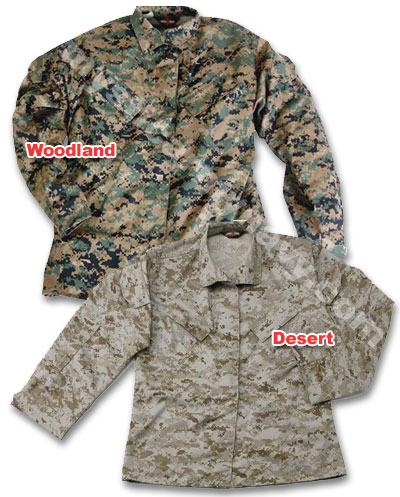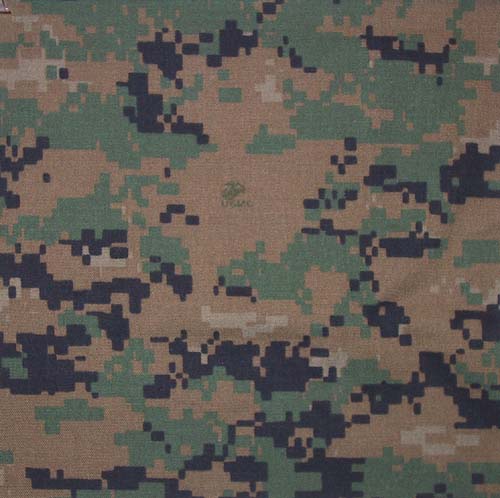This may be the most well-know type of camo. It is inspired by natural cryptic coloration. The soldiers are not born with skins like those creatures in the woods, so we clothe them.
One very interesting fact is that the camo pattern in the US Marine uniform has become pixelated since 2003. The new pattern looks pretty trendy: it is formed by a number of small rectangular pixels of color. In theory, it is a far more effective camouflage than the traditional patterns because it mimics the dappled textures and rough boundaries found in natural settings. This is caused by how the human eye interacts with pixelated images. It is also known as the "digital pattern" because of its micropattern (pixels) rather than the old macropattern (big blobs).
To reach the final versions of MARPAT (MARine PATtern), the United States Marine Corps design team went through over 150 different camo patterns. The pixels were generated by highly complex fractal equations that result in a non-repeating pattern. Then they narrowed down to three and reconstructed them with new shapes and unique color blends that would allow a more effective uniform in a great range of environments. Before issuance, field tests were required in various environments, wet and dry, day and night, with night vision and various optics. (How do architects make patterns?)
The first pixelated camo pattern was introduced in 1997/98 on the helmet cover by the Canadian Forces. It's called CADPAT (CAnadian Disruptive PATtern).





No comments:
Post a Comment